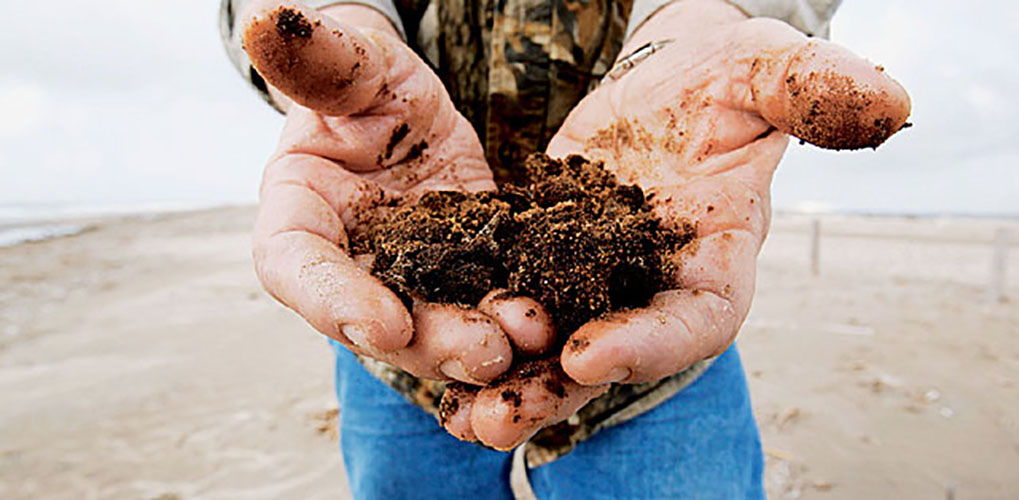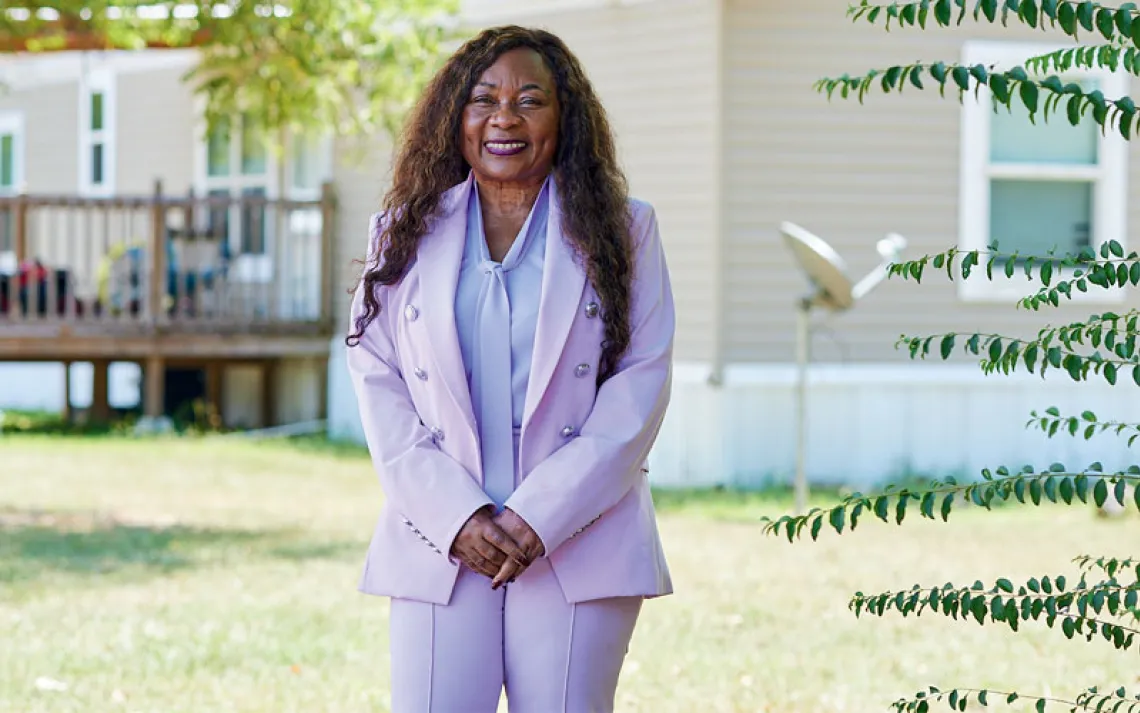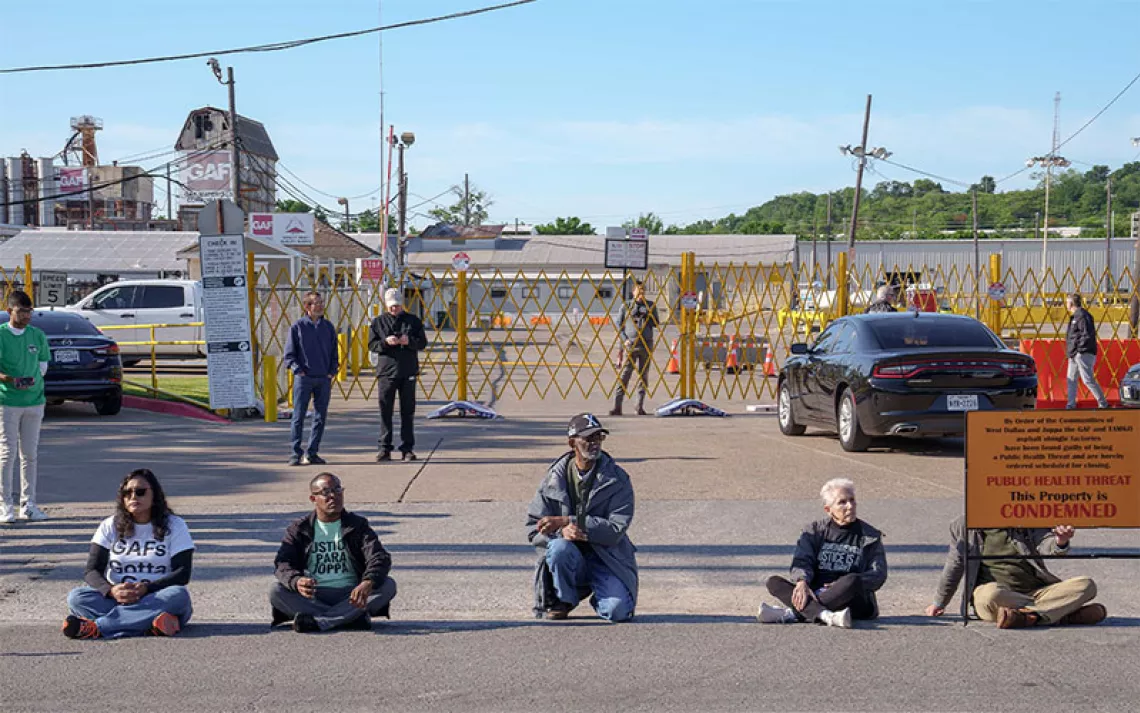Livelihoods on the Line
The cleanup is winding down, but the question remains: Would you eat an oyster from the Gulf of Mexico?

Whether by the oil spill itself or the public's perception of the spill, Al Sunseri's oyster business has been devastated. | Photo by Sean Gardner
LOUISIANA HIGHWAY 1 SNAKES THROUGH the boot of the state, south of New Orleans, bisecting small communities such as Lockport, Larose, Galliano, and Golden Meadow before dead-ending at the Gulf of Mexico in the village of Grand Isle. The two-lane blacktop mostly hews to Bayou Lafourche (pronounced La-FOOSH), a broad canal connected to the Gulf, where, for mile after mile, shrimp trawlers and fishing boats line its banks. Adjacent to the moored vessels at regular intervals are the warehouses and equipment yards of oil and gas service companies, which supply the dense thicket of offshore drilling platforms that has sprouted along the Louisiana coast over the past five decades.
I'm traveling from New Orleans on a January morning to meet Forrest Travirca, a former state wildlife officer who now serves as a field inspector for the Wisner Donation, a land trust that owns a 35,000-acre coastal preserve west of Grand Isle. I haven't been down LA 1 since the previous summer, when the area was besieged by cleanup crews, government officials, environmental researchers, and the national news media. They'd flocked to South Louisiana during the three months when BP's blown-out Macondo well was gushing crude into the Gulf. Today traffic is light.

"It's toxic down here," says Forrest Travirca. | Photo by Sean Gardner
At a security checkpoint at the base of a bridge leading to the beach, two guards come out of a hut to explain that the public is still barred from this stretch of shoreline. When Travirca picks me up a few minutes later in a canopied ATV to transport me over the bridge, he says that, as far as he's concerned, the area remains a crime scene and the nine-mile length of Fourchon Beach he oversees for the trust is basically "a storage facility for BP oil."
I find it hard to credit his claim. The last slick had come ashore back in July, and the gray windswept sand seems much like the beaches I had known growing up in Louisiana, with seabirds busily hunting unlucky invertebrates in the surf line. I tell Travirca I think it looks beautiful. He stops the ATV and tells me to hop out. Bending down, he picks up a dark dollop of what appears to be sand-covered clay about the size of a small sand dollar and encourages me to do the same. When I break mine in half, the center is moist and smells strongly of petroleum, and my fingers instantly become slicked with oil. The beach is speckled with the dark balls. "Public access might be years away," Travirca tells me. "It's toxic down here, like Bikini Atoll."
Just how long the spill's damage will last remains a hot topic of debate along the Gulf Coast. In February, a report prepared for the U.S. Coast Guard by a scientific advisory team concluded that the kind of oil I encountered on the beach near Port Fourchon had degraded to the point where it posed minimal public health risk and that continuing to clean it up might actually harm habitat. Robert Wiygul, a Mississippi environmental attorney, says that the study doesn't adequately take into account the oil that continues to appear along Gulf beaches. Wiygul, who represents the Wisner Donation as well as the Sierra Club and other environmental groups in litigation connected to the spill, says he was part of a group that took core samples off the beach in December. Three of the seven samples they collected contained oil.
Even experts find it hard to gauge when the Gulf cleanup effort might start doing more harm than good. "How clean is clean?" asks John Pardue, a professor of civil and environmental engineering at Louisiana State University, who has worked on spill issues. "What is the risk of going to the beach with the family if your kids are going to be finding pieces of oil?" Pardue's thinking lines up with the government's finding that oil, once weathered, isn't much of a risk to people. But researchers are less certain about the potential danger posed by the lingering presence of Corexit, a dispersant used in huge quantities during the spill to break up the oil and keep it from the surface.
The use of Corexit may have actually magnified the spill's impact on the shrimp, crabs, oysters, and fish that are the foundation of the Gulf Coast's multibillion-dollar seafood industry. The combination of oil and dispersant formed a diffuse toxic soup, with the oil broken up into droplets so tiny that it's easier for harmful compounds to enter the food chain, argue toxicologists such as Marco Kaltofen and William Sawyer, who advise parties in litigation against BP. But in February, a spokesperson for the National Oceanic and Atmospheric Administration maintained that less than 1 percent of its samples of blue crabs showed contamination exceeding EPA standards. The Food and Drug Administration has also stated that Gulf seafood is safe to eat.
Why the split opinion? It's mainly a question of methodology, says Wilma Subra, a Louisiana biochemist who works with environmental groups. Subra says that her testing largely tracks government findings on levels of environmental contamination. But she notes that the government's seafood guidelines use a consumption rate far below that of any regular seafood eater. "For example, they are assuming you'll eat just four jumbo shrimp a week," she says. "When did you ever just eat four shrimp at a time?" Subra also believes that the government should be testing for a broader range of chemicals than it currently does.
Even though Louisiana seafood has the government's stamp of approval, the spill has devastated Gulf shrimpers, fishermen, and oystermen. At P&J Oyster Company, which has been supplying restaurants and hotels for more than a century, co-owner Al Sunseri leads me over to a counter where a lone shucker is working his way through a few bags of oysters freshly delivered to the company's warehouse on the edge of the French Quarter in New Orleans.
Before the spill, Sunseri might have had 10 more shuckers at work. But now much of his supply has vanished, and he's had to let most of his workers go. "From Texas," he says, jerking a thumb at the oysters he does have.
He hands me one to try. It's salty, with a little mineral taste, and delicious--aside from the layer of grit I ingest from the lip of the shell. "No, no," Sunseri says, "you have to eat from above." He demonstrates the proper technique, lifting the oyster from its shell with dexterous lips. "Perfectly fine oysters," he declares, and then has another, but his voice lacks enthusiasm. Over the next hour I learn why, as Sunseri gives me an oyster tutorial, describing old beds that were lost in the same tones a Napa Valley vintner might use in discussing a prized patch of hillside. Using a collection of shells he keeps handy, he shows how deep exterior striations on an oyster's shell indicate it matured in a desirably strong current and how important precise salinity levels are to producing ideal growing conditions. Sunseri and his brother are the fourth generation of his family to run P&J, but he's not sure there will be a fifth. "Our whole business is in a state of flux," he says, shaking his head. "It's really day-to-day."
Things aren't much better for Gulf shrimpers such as David Chauvin. "In 25 years, I've never seen the industry like this," he says. "It's just as bad as you possibly could imagine." Chauvin used to do a brisk business selling his shrimp to out-of-state buyers over the Internet. "Since May I haven't made one sale like that," he says, noting that he'd dropped prices and dropped them again, but to little effect. If things don't turn around during the upcoming season, he says that he may have to start shutting his business down. In Galliano, fellow shrimper Mary Bruce hasn't had her boat out trawling since the spill closed off large swaths of the Gulf last spring and summer. "I'm just not sure people are ready to buy yet," she says. "EPA says it's safe, but a lot of people don't believe them."
THAT PERCEPTION, EVEN AMONG THOSE WHO LIVE and work near the Gulf Coast, is the Gulf seafood industry's main problem, says Ewell Smith, executive director of the Louisiana Seafood Promotion and Marketing Board. "And it gets worse the further you get away from the coast," he says. He points out that after the Exxon Valdez spill, it took Alaska about five years to convince buyers its seafood was safe. Smith notes that seafood testing done by state and federal authorities to date has shown no contamination. But some of that testing, particularly the so-called sniff test, which relies on an inspector's olfactory prowess to detect oil contamination, has been criticized as inadequate. Smith defends the method: "If you take just a drop of crude oil and put it in a bucket of water, your eyes well up. That smell is imprinted in your brain."
But Stuart Smith, a veteran environmental attorney who is suing BP, dismisses the sniff test, saying, "Our experts have shown that the compounds of interest wouldn't be detectable by a bloodhound."
In addition to raising questions over damages to seafood, several environmental groups, including the Sierra Club and the Center for Biological Diversity, are pursuing legal actions against BP under the Oil Pollution Act and other statutes. They hope to coax the federal government to levy maximum damages and fines in connection with the Macondo blowout. Groups have also sued under the National Environmental Policy Act to force federal regulators to require comprehensive risk assessments of offshore wells before drilling permits are issued. So far the government has taken the position that such suits are either premature, because new regulations are being established, or moot, because they still don't see immediate danger posed to wildlife, according to Bill Snape, a Washington, D.C., attorney who represents the Center for Biological Diversity. "Apparently we're both too early and too late," says Snape. "What they really want is for us to go away, for things to go back to how they were on April 19, 2010, before any of this happened."
Some of the most significant actions being pursued by environmental groups, at least in terms of economic damages, arise under the Clean Water Act. That statute provides that if a company is found to have acted with "gross negligence or willful misconduct," it can be fined up to $4,300 for every barrel of oil spilled into the Gulf, a total fine that could be upward of $20 billion. BP has challenged the government's official spill estimate of 4.9 million barrels, arguing the actual amount was much smaller. Devorah Ancel, of the Sierra Club's Environmental Law Program, says the Club's effort to join the government's case against BP is being opposed by both the oil giant and the Justice Department. "It's not all that surprising given the government's failure to represent the public interest with the oil industry in the past," she says. It's important for environmental groups to have a seat at the table in litigation against BP, Ancel says, to ensure not only that maximum fines are imposed but also that money paid by BP and other defendants is actually used to restore the Gulf's crippled environment and "not to fund freeway off-ramps or something."
Whether such restoration can come in time to rescue those who depend on the Gulf for their livelihood remains an open question. "I'm hopeful. We're a 135-year business," Al Sunseri says. "But the truth is, no one knows how long it's going to take to get back."
 The Magazine of The Sierra Club
The Magazine of The Sierra Club



